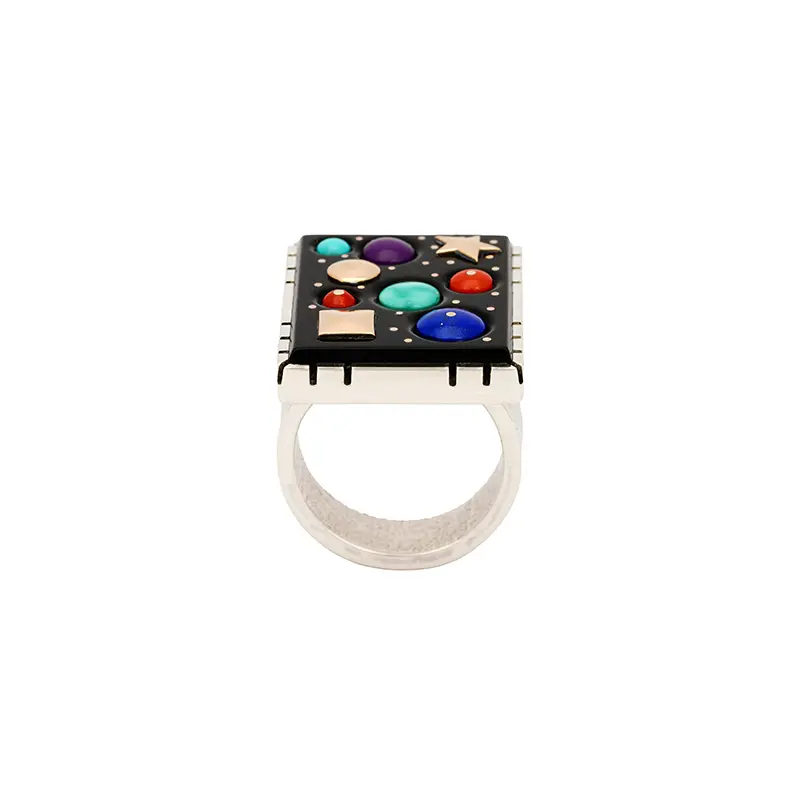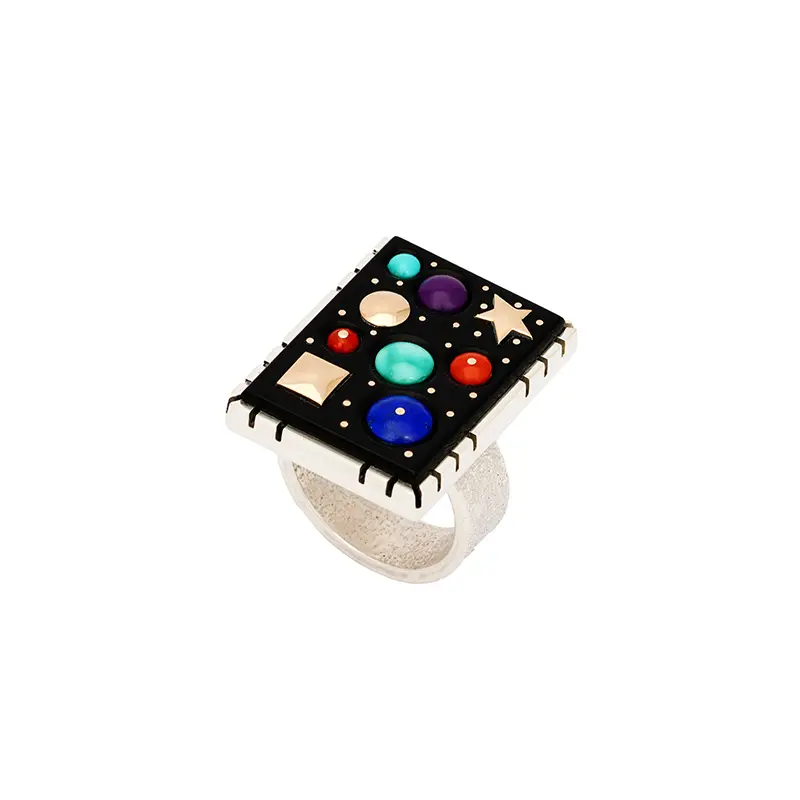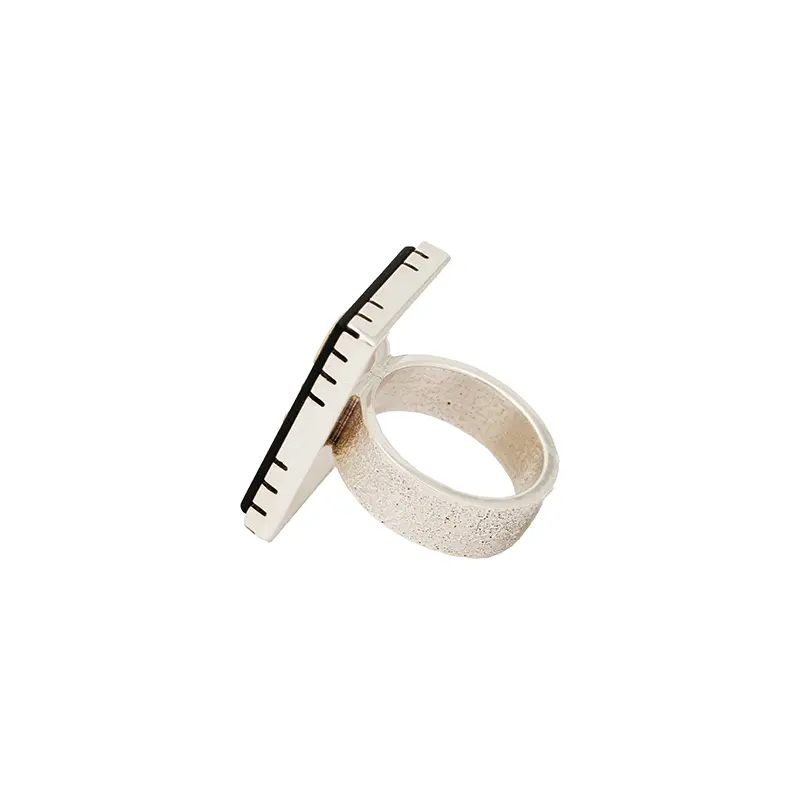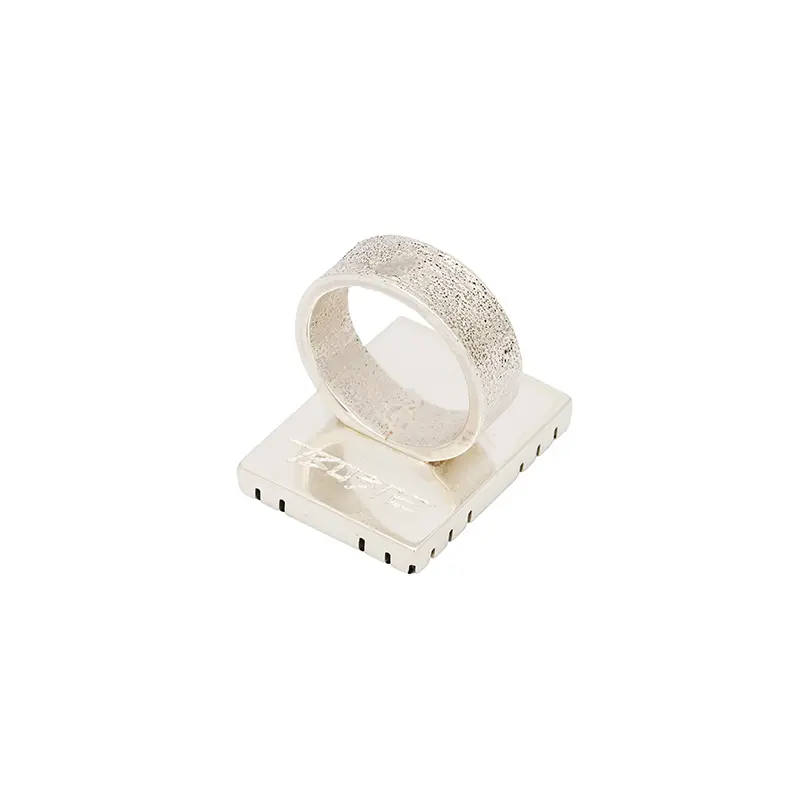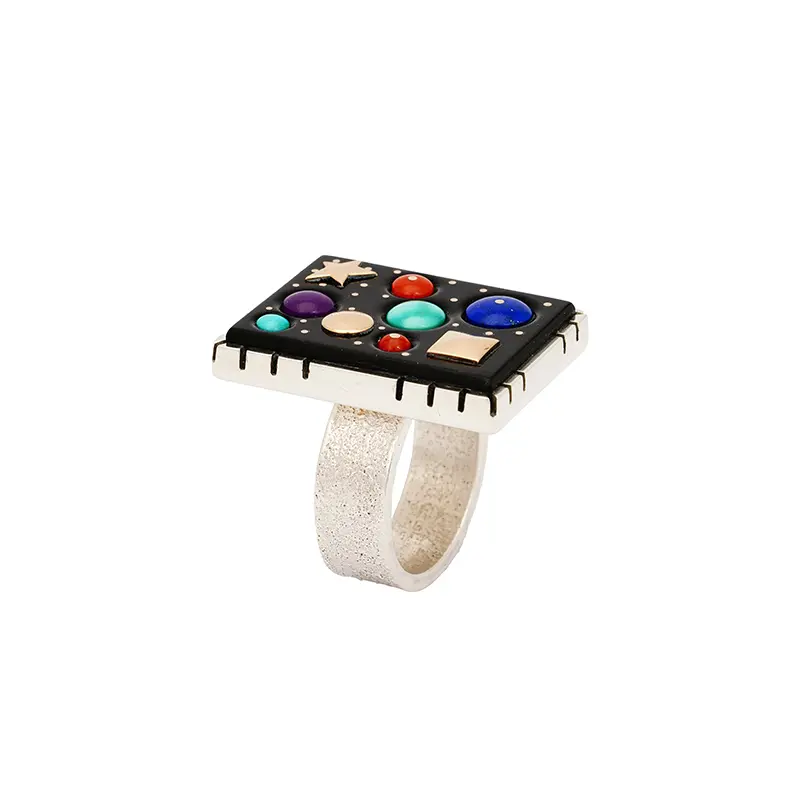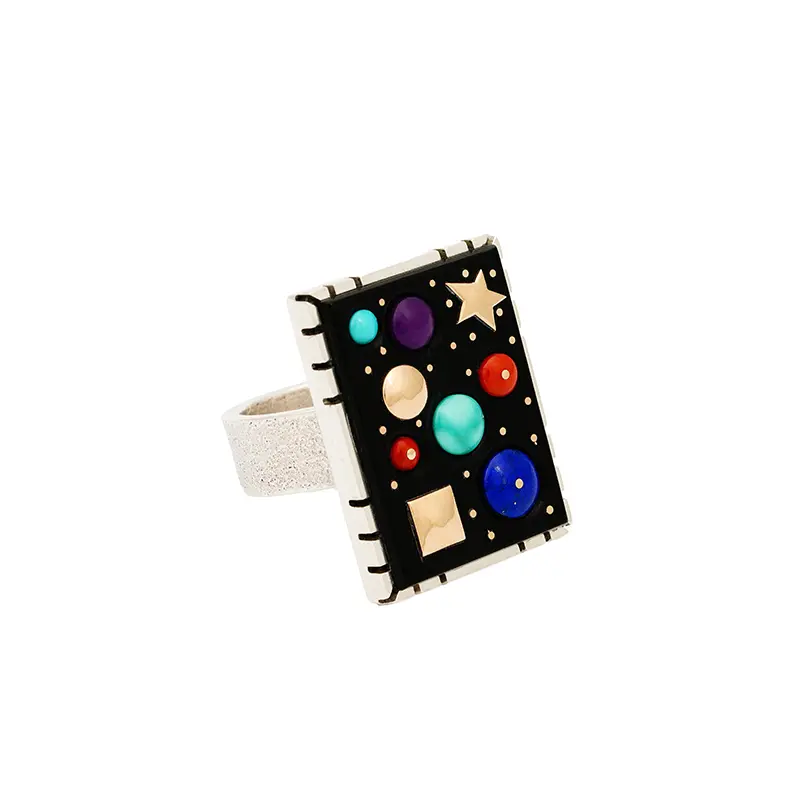Boyd Tsosie is a distinguished Navajo jeweler recognized for his refined craftsmanship, modern sensibility, and deep respect for tradition. Known for his technically precise, handmade work, Tsosie brings a distinctive voice to contemporary Native American jewelry through pieces that blend clean geometry with symbolic storytelling.
His designs often explore themes of balance, cosmic order, and abstract form. Whether working with sterling silver, 14k gold, or a vivid array of semi-precious stones, Tsosie creates jewelry that is both visually striking and conceptually layered. Signature elements of his style include constellation-inspired inlays, intentional asymmetry, and the use of contrasting textures to highlight color and shape.
Many of his pieces are tufa-cast and finished with meticulously hand-cut inlay—turquoise, lapis lazuli, coral, jet, and sugilite—arranged in patterns that evoke celestial or spiritual motifs. Gold accents are often incorporated as focal points, adding contrast and dimension while reinforcing themes of harmony and direction.
Grounded in Navajo aesthetics but guided by a contemporary vision, Boyd Tsosie’s work continues to push the boundaries of tradition while honoring its roots. His jewelry is widely respected for its craftsmanship, originality, and quiet sophistication.


